
Visitors to the club are greeted with 360-degree panoramic views of a somma of approx. 1,000m that encircles the vast caldera, which stretches 11km north-south and 8km east-west. If you turn around, you will find Mt. Kamiyama (1,438m) towering over the club. A partial collapse some three thousand years ago formed Lake Ashinoko, and Owakudani valley, which has been spewing volcanic gasses since. Mt. Kamiyama erupted 25,000 years ago and its lava blocked the flow of the Hayakawa River, and this area became a part of the lake bottom. The size of the lake was twice that of Lake Ashinoko today (720ha, 1,779acre). Approx. 5,000 years ago, silt and sedimentation as well as lowering of water level changed this area into a marsh.
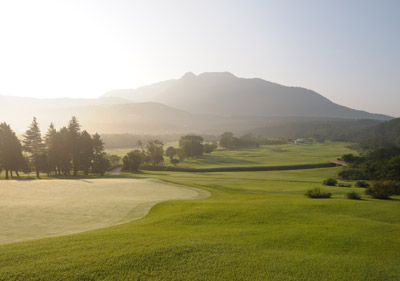
The gift of nature rich in variation, such as the somma, the central cone, the marsh and the lake as well as hot springs was brought by the complex volcanic activities that continued for 650,000 years. Hakone highland has a vertical drop of 1,400m within the area, and various kinds of flora flourish, including deciduous broad-leaf forests, which is taken place by evergreen forests. Hakone highland was nominated as a national park in 1936 along with the adjacent Mt. Fuji.
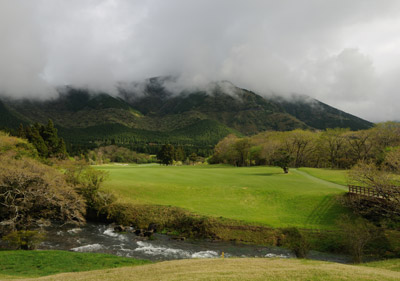
The prairie surrounded by the somma is called Sengokuhara. It was in the 17th Century that the first settlers moved here. However, the population never exceeded 200, as the harsh cold winds imposed much hardship on the villagers. In the Meiji-era, two industrialists, who established the foundations of modernization of this country, focused on this prairie. They were Eiichi Shibusawa and Takashi Masuda. They bought the prairie from Kanagawa prefecture, and set up a ranch. Their plan was to raise sheep for wool, which Japan had to import that time. However, the plan did not succeed and the vast patch of land was abandoned.
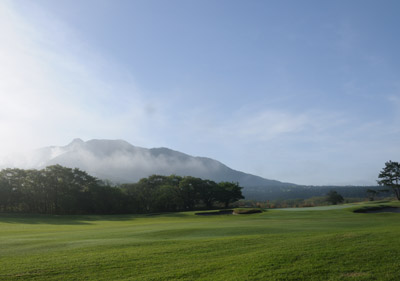
In 1933, Hakone Hot Spring Supply Company acquired the land and started selling lots for vacation homes. They planned to build a golf course in the area in 1953. 78 prominent businessmen participated in the plan as founders and invited Shiro Akahoshi to be their architect. Shiro immediately recognized the potential of the area, with the panoramic mountain range and prairie, and said that it was a natural links, waiting to become a first-class golf course. His sentiment was probably similar to what Bobby Jones and Alister MacKenzie felt at the sight of farmland in Augusta Georgia.
Shiro Akahoshi was born in 1895. He went to the United States in 1913, and played American football at the University of Pennsylvania. His father, Yanosuke, was a Samurai of Satsuma province, who later amassed a fortune as an industrialist. Shiro's younger brother, Rokuro attended Princeton University, and recorded a victory in the Spring Tournament at Pinehurst in 1924.
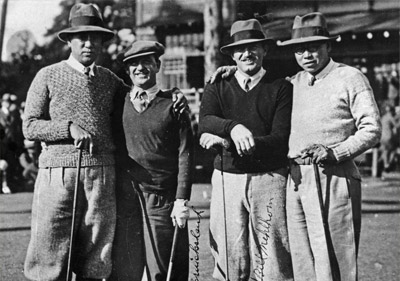
Shiro and Rokuro, returned to Japan, and left a huge footprint in the early days of golf in this country. Shiro won the Japan Amateur Championship in 1926 and Rokuro won the first Japan Open Tournament. They lost a close exhibition match with Walter Hagen and Joe Kirkwood, Sr. in 1930, but won a match with William E. "Wild Bill" Mehlhorn and Bobby Cruickshank in December of the same year. The news of their victory was even a topic in the U.S. Their focus gradually shifted from golf games to golf course architecture. The biggest turning point for Shiro as a golf course architect was his encounter with Charles H. Alison. When Alison was invited to Japan to design Asaka Course of Tokyo Golf Club, Shiro was assigned as the Japanese representative, and was able to learn golf course design theory as well as engineering knowhow from Alison. Shiro also studied Alister MacKenzie's design theory through his works. MacKenzie and Alison have a lot in common as golf course architects. It is because of this background that the golf courses the Akahoshi brothers designed show strong influence of early American golf course design, where architects emphasized the importance of natural scenery and strategic value of natural terrain.
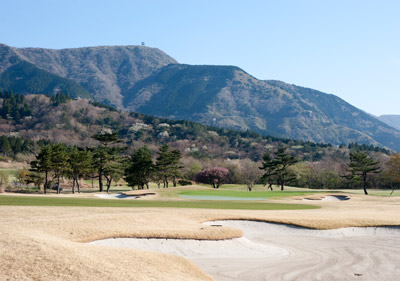
Hakone Country Club is the first golf course that Shiro Akahoshi designed as a professional architect after WWII. Shiro was very proud of his design and considered it the best accomplishment of his carrier. He enjoyed playing a lot at the club late in his life. His design theory was to utilize natural terrain as much as possible, and to offer multiple shot options towards every green. Each player is required to choose one among various shot options, depending on his or her golf skills. There are gentle undulations in the prairie, and the Hayakawa River snakes through the wide plain from Lake Ashinoko. This plain was the best canvas on which Shiro could paint his design philosophy. The front and back nines form two large loops from the old clubhouse, which was located on top of a small hill. Each hole is separated from another, not by planted trees, but by natural bushes of eulalia or deciduous broad-leaf forests that are scattered in the area. There is no gorgeous adaptation in the golf course, but the design philosophy maximizes the harmony of the golf links with natural terrain, and each hole is strategically designed for a player to think hard about how to play it. This combination makes every player happy to find a new aspect of the course every time.
There is a varying range of grasses from fairways to natural heavy roughs, and the course has a wonderful orchestra of deciduous broad-leaf forests, swamps where various hygrophytes can be seen, and marshes where the Hayakawa River and various small brooks snake around. This combination of natural beauty creates a very unique natural environment. Hakone highland is famous for its rich flora: some 1,700 species have been confirmed. This number is equivalent to what you can find in the North and South islands of New Zealand. During an environmental survey of the golf course in 2014, 439 species of flora and 1,130 species of fauna were confirmed, including 111 endangered species as designated by the governments of Japan and Kanagawa Prefecture. Another natural environment to note is a spring that gushes out exceptionally clear water. The spring by the 2nd hole is connected to Mt. Kamiyama's underground water vein. You can find a school of Amur minnows there, a species of fish that can only survive in very clear water. This wonderful natural environment is an asset that we would like to maintain for the future generations.
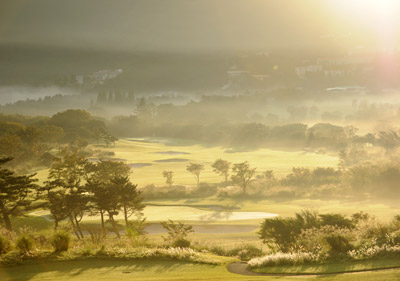
We fondly call this "Kochu Tenchi", which translates to "heaven and earth in a pot". This name is derived from ancient Chinese mythology (Book of the Later Han). An old medicine peddler carried a pot, in which he slept every night. One day he invited a curious village officer to step into the pot, where he found Shangri-La, with beautiful buildings and a garden full of lovely trees and grass. We would like to maintain this precious and beautiful natural environment, the "Kochu Tenchi", and further enhance the mutual friendship among its members.
The essence of this is the harmony between the beautiful natural environment and those members and people who work there, and those who visit the club to appreciate the environment and club life. Our golf course lies in the middle of Hakone National Park, a precious national treasure.